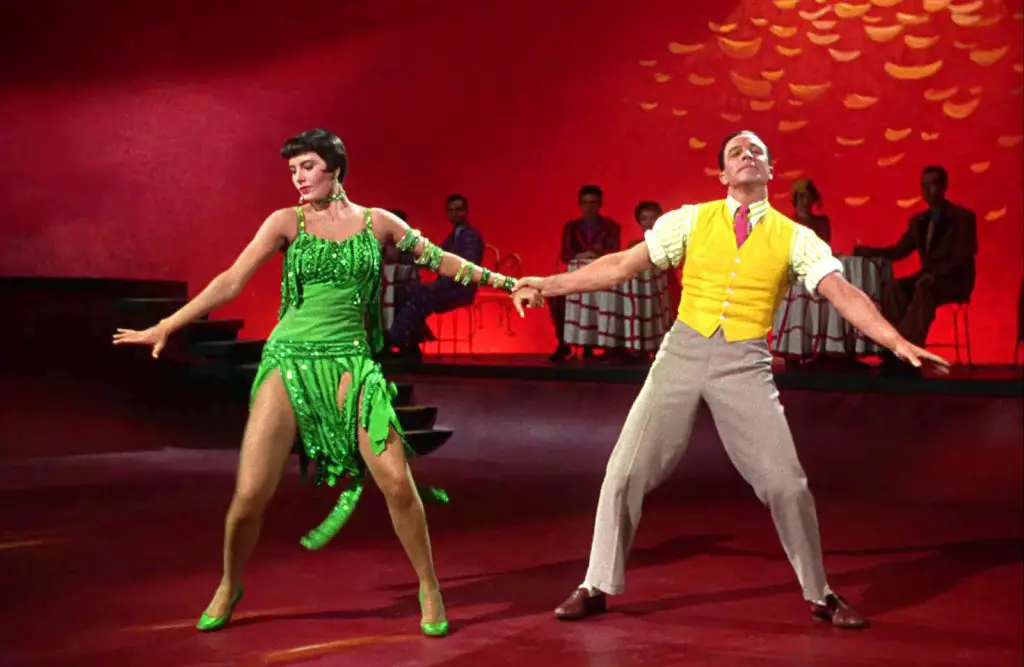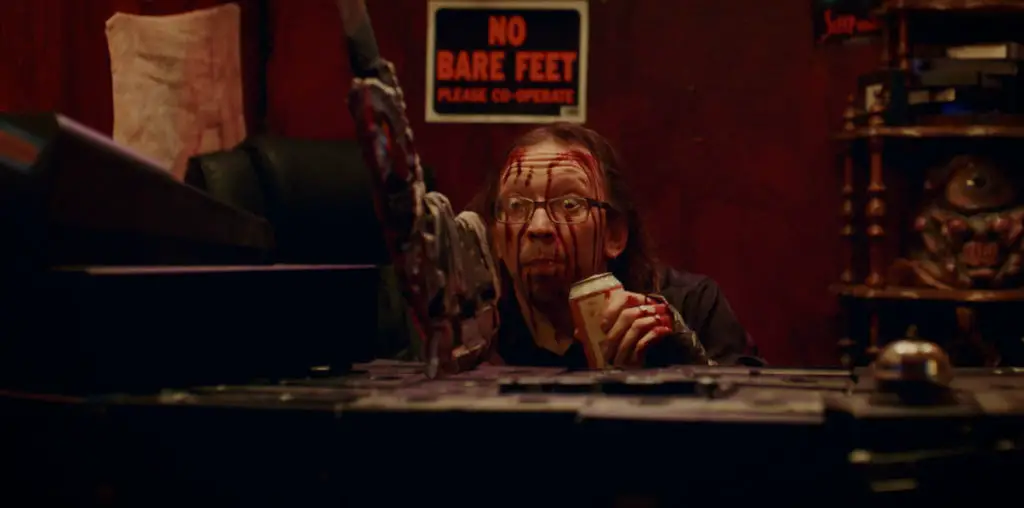
Check out KJ’s previous SIFF 2004 reports>>>
Cat in the Hat and Van Helsing serenaded insomniacs off to Never Never Land, despite the hundreds of millions spent on junky, juiced-up action scenes and overripe set production. In contrast, Richard Linklater’s quiet 1995 romance “Before Sunrise” reminded us that two people engaged in enthusiastic, carpe diem conversation could hold the attention of even the most sleepy-eyed narcoleptic. As if to confirm this championing of dialogue and character over redundant explosions, Linklater presents “Before Sunset,” perhaps the first Hollywood sequel produced in the new millenium without anything that catches fire or blows apart.
“Before Sunrise” introduced viewers to Jesse (Ethan Hawke) and Celine (Julie Delpy), two young travelers who meet on a Vienna-bound train. He was an American exploring Europe. She was a graduate student returning to Paris following a holiday break. When their initial conversation fueled a sexy chemistry, Jesse persuaded Celine to exit the train and wander the streets of Vienna all night, before his flight to the States arrived at dawn. That was it for plot, but Linklater’s dialogue sparked and pulsated like a disco lighting rig. We wanted these two appealing soul-searchers to get together, and there was an inherent tension in the fact that Jesse was mere hours away from leaving the country. After a night of dazzling talk, the couple promised to meet again in six months. Then both potential soul mates were whisked away to their own separate worlds (only to reunite briefly in a scene from Waking Life, Linklater’s dreamy, animated thought-piece from 2001).
The sequel picks up nine years later. One of the many pleasures of Linklater’s approach is his gradual disclosure of details. Jesse is seen promoting a novel in Paris. Is he married? Did he ever return to France six months following his one-night relationship with Celine? The director will eventually fill in these voids, but meanwhile, he uses words to create suspense and curiosity. Even the book-signing session attended by Hawke’s bestselling author is fleshed out and not just a contrived setup. “We see the world through our own tiny keyhole,” Jesse explains, fielding questions from the Shakespeare & Co. bookstore hosting his appearance.
It becomes clear that his novel concerns the night he spent with Celine so long ago. “The book ends on a ambiguous note,” says a French journalist. “Do they get together again?” Jesse responds that the outcome depends on whether “you’re a romantic or a cynic.” In the nine years that have passed since “Before Sunrise,” which has Jesse become?
The answer lies with the presence that quickly distracts him from outside the bookstore’s window. It’s Celine, whom the author quickly greets with an awkward kiss and some nervous laughter. Now residing in Paris, she has seen his name on the bookstore calendar. Meanwhile, she admits to having read the novel. “It was vaguely familiar,” she says of the subject matter, smirking sarcastically.
And from there, the two gabbers are suddenly picking up where they left off in the first film, haunting cafes and ferry boats as they catch up on a decade’s worth of triumphs, disappointments, and questions. Hawke is giddy and optimistic in his role, a positive man who feels that the world has improved since their last visit together. Delpy, having grown into an environmental activist, is more cynical. Meanwhile, there’s poignancy in the older, wiser appearances of both stars. Hawke appears dapper and settled in. Delpy is more slim and lanky than before. When Jesse comments that Celine has lost weight, she shoots back, “Did you think I was a fatty before? A fat French girl?”
They examine world violence, religion, and self-fulfillment. Sex and marriage are touched on. Through it all, Linklater reminds us of the wonder and mystery inherent in simple human interaction. All the big issues are here, wrapped in a seemingly basic wrapper, but mesmerizing all the way into “Before Sunset”’s last frame. And even then, the director takes a chance. Without spoiling the final outcome, I’ll borrow a comment voiced by another viewer while leaving the theatre: “It surprises me that an American would direct that movie.”
It’s also surprising to find an American behind “Maria Full of Grace,” a fascinating character study framed by Colombia’s booming heroin trade. Brooklyn-based Director Joshua Marston takes us into the rebellious head of Maria Alvarez (Catalina Sandino Moreno), a doe-eyed, dark-haired teenager eking out a thankless living at a Colombian flower plantation. Her extended family lives under one tiny, cramped roof, and insists that Maria share her hard-earned dough with everyone. Meanwhile, a passive, hard-drinking boyfriend festers and vegetates, unwilling to take charge of his future.
Dissatisfied with her lot in life, Maria activates a stubborn, iron will and pushes towards something more promising. An out-of-town boy dances with her at a party, then reveals a means of making a quick $5,000 dollars. The job will involve travel. It sounds like a way out of the lazy routine that’s engulfing her.
One of Marston’s unique approaches to “Maria…” is to frame the exotic and dangerous in an immediate way. When his lead character climbs the creaky stairs that lead to a hidden room atop a local pharmacy, we feel that we’re on the journey with her. When she finds herself seated opposite a tired-faced old man named Javier (Jaime Osorio Gomez) who interrogates her and asks if she scares easily, we sense both her curiosity and her fear.
Maria is slowly introduced to Colombia’s illicit drug smuggling trade. She is trained in how to swallow grape-sized, rubber-encased pellets of heroin. Eventually, she will ingest 62, board a plane, and transport the covert goods to New York City as a “mule.” Before stepping on the jet, however, she’s awakened to the seriousness of her predicament when the previously paternal Javier – depicted more as a relaxed grandfatherly-type than a ruthless drug lord – warns her that if any of the cargo comes up missing, he will put in a “visit” to her family.
Accompanied by three additional mules, Maria finds her journey north to be fraught with unpredictable dangers. If one of the white, marshmallow-shaped drug capsules explodes in her stomach, a slow, agonizing death is assured. Meanwhile, there are customs interrogations, hardened drug dealers, and a foreign world bursting with confusion and loneliness – but also promising the potential for a new beginning.
Appearing in nearly every frame, newcomer Sandino is an astonishing find (the power of her performance was honored with the Silver Bear for Best Actress at 2004’s Berlin Film Festival). With no previous feature film experience, the fledgling actress was chosen from over 800 women to play the demanding role of Maria. Her ability to elicit strong emotions with little dialogue brings power and truth to her against-the-grain character, an assertive adolescent marching to the beat of a different drummer. Constantly testing the mettle of those surrounding her, Sandino chastises a sister for not carrying her own financial weight, quits a dead-end job, and confronts two slimy heroin transporters.
Maria might be stubborn and bullheaded, but her vulnerability also shines through, in an emotional scene where she pleads with a kind, New York woman (Patricia Rae) who has taken her in. The truth comes out concerning Maria’s reason for being away from her home country, and angry emotions erupt from this Good Samaritan, who suddenly has her own personal reasons for resenting the mysterious houseguest.
Other non-actors familiar with the film’s subject matter also pop up, creating an authentic vibe that only adds to Marston’s documentary-style feel. Orlando Tobon (also the movie’s associate producer) plays a Queens-based travel agent who has adopted the unusual niche of helping transport the bodies of deceased mules back to their families in Colombia. His character, Don Fernando, was based on Tobon’s actual life experiences working in Jackson Heights’ Colombian community.
Each year, hundreds of mules make the same journey depicted in Marston’s film. For many, it’s a one-way ticket to the grave. But “Maria Full of Grace” isn’t really about drugs. It’s about what motivates people to make hard choices. However, deciding whether or not to view this unique glimpse into a seldom seen world should be easy. It’s a must-see.
The SIFF experience transcends that of merely wandering from screen to screen in some stuffy, homogenized multiplex, weathering hemorrhoids and a stiff back. The Seattle landscape literally becomes part of the package. Three of the event’s theatres sit on the loud, club-saturated streets of Capitol Hill, while the two remaining venues inhabit the downtown, high rise district. Some strategic footwork is required to effectively commute from 5th Avenue’s swank Cinerama to some midnight Italian zombie gore-fest at the Hill’s Egyptian Theater. Juggling one’s movie menu between these five film-going locales simply enhances the fun factor.
To ensure that serious, stuffy highbrow doesn’t completely dominate campy, escapist lowbrow, a Drive-in Party is often thrown into the mix. Auburn’s Valley 6 Drive-In hosted 2004’s version, which had gleeful participants tossing pillows, lawn chairs, and sleeping bags into their pickups and SUV’s, the better to view a triple-bill of foreign fright films.
To ease this communal camping party into a good-humored mood, Australia’s Romero-meets-X Files zombie epic “Undead” unveiled its tale of brain-craving space invaders and their nemesis – a fully-living, Leone-inspired weapons shop owner who has a way with two-handed pistol play. “Undead” has it all – zombie bass that leap from the depths to nip an angler’s nose, a foul-mouthed cop who shoots his mouth off more often than his revolver, and a skin-scalding acid rain. Directors Peter and Michael Spierig acknowledge the absurdity of their chosen genre, mixing the smashed skulls and viscera with the shrewdest sense of humor this side of Peter Jackson’s “Dead Alive.”
Humor wasn’t on the priority list of “Haute Tension,” a nasty, nihilistic French film that follows Gaspar Noe’s tradition of dragging an audience’s nose through as much death and dismemberment as possible. A grimy, necrophiliac trucker assaults a rural farm family, with each lovingly choreographed kill more lurid than the next. If your idea of a ripsnorting good time involves watching a father have his head wedged between two stairwell banisters – then sheared off by an oncoming wooden dresser – knock yourselves out with “Haute Tension.”
“The Locals,” an atmospheric New Zealand film by director Greg Page, eschews splatter for splatter’s sake in its tale of two lustful lads in pursuit of wine, women, and a good wave. They meet up with two nubile young surfer-girls – or so it would seem. A series of moonlit chases and some Shyamalan-inspired revelations flavor this low budget, better than average Kiwi dish.
Stay tuned for further updates from SIFF 2004. Until then, let’s have some Back Talk>>>

